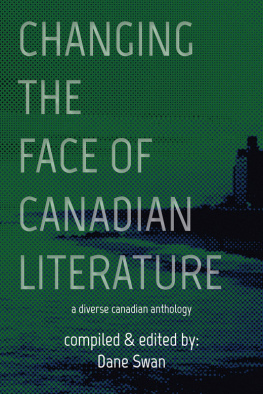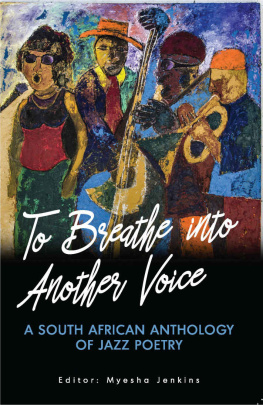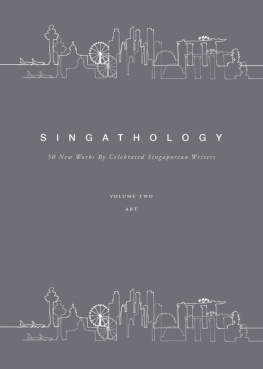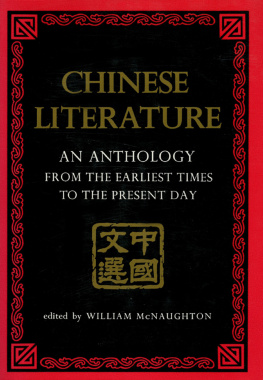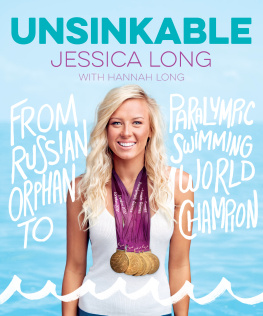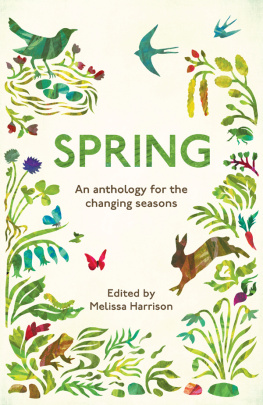table of contents

CHANGING THE FACE
OF CANADIAN LITERATURE
ESSENTIAL ANTHOLOGIES SERIES 12

Guernica Editions Inc. acknowledges the support of the Canada Council
for the Arts and the Ontario Arts Council. The Ontario Arts Council
is an agency of the Government of Ontario.
We acknowledge the financial support of the Government of Canada.
CHANGING THE FACE
OF CANADIAN LITERATURE
Compiled and edited by
Dane Swan

GUERNICA
TORONTO BUFFALO LANCASTER (U.K.)
2020
Copyright 2020, the Editor, the Contributors and Guernica Editions Inc.
All rights reserved. The use of any part of this publication,
reproduced, transmitted in any form or by any means, electronic,
mechanical, photocopying, recording or otherwise stored in a
retrieval system, without the prior consent of the publisher is an
infringement of the copyright law.
Editor: Dane Swan
Book Cover and Layout: Alvin Wong
General Editor: Michael Mirolla
Cover image: Kiki Zhang
Guernica Editions Inc.
287 Templemead Drive, Hamilton (ON), Canada L8W 2W4
2250 Military Road, Tonawanda, N.Y. 14150-6000 U.S.A.
www.guernicaeditions.com
Distributors:
University of Toronto Press Distribution, 5201 Dufferin Street, Toronto (ON), Canada M3H 5T8
Gazelle Book Services, White Cross Mills, High Town, Lancaster LA1 4XS U.K.
Independent Publishers Group (IPG), 600 North Pulaski Road, Chicago IL 60624
First edition.
Printed in Canada.
Legal Deposit Third Quarter
Library of Congress Catalog Card Number: 2019945610
Library and Archives Canada Cataloguing in Publication
Title: Changing the face of Canadian literature / compiled and edited by Dane Swan.
Names: Swan, Dane, editor.
Description: Series statement: Essential anthologies series ; 12
Identifiers: Canadiana (print) 20190153385 | Canadiana (ebook) 20190153725
| ISBN 9781771835237 (softcover) | ISBN 9781771835244 (EPUB) | ISBN 9781771835251 (Kindle)
Subjects: LCSH: Ethnic groupsCanadaLiterary collections.
| CSH: Canadian literature (English)Minority authors. | CSH: Canadian literature (English)21st century.
Classification: LCC PS8235.M56 C43 2020 | DDC C810.8/09206930971dc23
table of contents
As a young reader, the one thing that I always hated in books were long forewords. Now as an adult, and the editor of this anthology, this places me in a peculiar predicament. Theres a lot to say. A lot that needs to be put out there about what Canada aspires to be and how its literary and arts communities, as a whole, have failed to recognize those aspirations in the work that is held up as Canadas triumphant creative output. I cant ignore that because I once hated reading long forewords. Hopefully, my younger self will forgive my transgression.
I write this from my apartment in Toronto, a city that celebrates trade and diverse culturesdespite the actions of certain groups in its recent past. Toronto inhabits Tkaronto, a place of trade and diverse indigenous nations including the Wendat, Anishinaabeg, Haudenosaunee, and Mississauga of the New Credit. Its almost as if the land is telling us how to live here. To trade both products and knowledge. To attempt to live peacefully in an environment born of many nations.
Since the 60s, Canada has aspired to be a multicultural nationalmost as if the aspirations of Canada, began to reflect the history of the region of Turtle Island it inhabits. However in literature, the recognition of authors from non Anglo Saxon cultures (in more than a token manner) until the last decade, has been abysmal.
Yes, there have been great authors like Austin Clarke, but even he did not get any real recognition from the literary elite in Canada until the 90s. Furthermore, Rinaldo Walcotts refusal to be a part of the Can-Lit scene is well documented. Even the press that has published this book, Guernica Editions, likely does not exist if it wasnt for Italian-Canadian writers not being recognized as writers by those who benefit from a glass ceiling.
I could go on, how the UBC Creative Writing Program controversy was handled by some of Canadas literary elite, drew a clear line to many of Canadas authors. As did the swell of racists who took joy from the controversy that took place at Write Magazine. The ease and comfort that editors and writers at some of Canadas most vaunted magazines and publications flaunted their hate was discouraging.
That said, things are better than they were. Back in 2009, when Guernica Editions offered to publish my first book, Bending the Continuum, I tried to research the literary landscape for black Canadian writers. Back then, most of the black authors I met waited until they were 40, and had a post grad degree before attempting to get published. Those who didnt want to wait migrated to the US, or self-published. The exception being a small pool of authors who were published in Ayanna Blacks Voices anthology.
Currently, most black authors still feel obligated to get post grad degrees, but theyre getting them at younger ages. Despite black men disproportionately not getting into post grad creative writing programs in Canada, a larger portion of those who do leave for the US are returning. I no longer feel isolated when I go to literary events in Toronto. There are more people of diverse backgrounds in more rooms, and in more roles. We still need more agents, more editors, and more people in positions of power from disenfranchised communities, but in a very short period of time I have been able to physically see things change as more culturally diverse faces enter the literary scene.
But I must digress, this anthology does not celebrate multiculturalism, it celebrates diversity. Diversity is a far wider spectrum. Diversity recognizes those both franchised and disenfranchised. Diversity includes those able and differently able. Diversity recognizes the geography of Canada. Despite rumors to the contrary, Canada is not a Toronto monolith. There are fantastic authors and poets in other cities, towns and provinces. Diversity recognizes that new writing can be written by both the young and the young at heart. Diversity recognizes that an author may identify as male, female, or other. Diversity also acknowledges that not all writers seek the page as their primary medium.
Its not who you know, its the quality of your writing, and how you engage your readers that matters. Its not about writing work that fits in, its about writing work that stands out because of an authors unique quirks and their perspective shaped by the things that make them who they are. Its not the schools the author may, or may not have gone to, its whether the people who read their writing enjoy the experience. The more diverse a nations writers are, the wider the breadth of people who feel they are a part of that nation. Why? Because their story is being told as part of the nations narrative. This moment, when so many voices from people with funny faces and names are being published, gaining recognition and being praised here and abroad, is something to celebrate, not just taken for granted as it currently is.
Every historically recognized literary movement in Canadas history before now has been used to exclude voices from its literature. This can be traced back to Canadas first literary movement. The Confederation Poets (1880-1897) were Canadas first school of poets. To be a member, you had to be a poet of the right stock, and considered young. Of course exceptions were made for older men, but all the women had to be young poets. None of this was necessarily stated aloud. Instead the catch all term, technical excellence was used.

